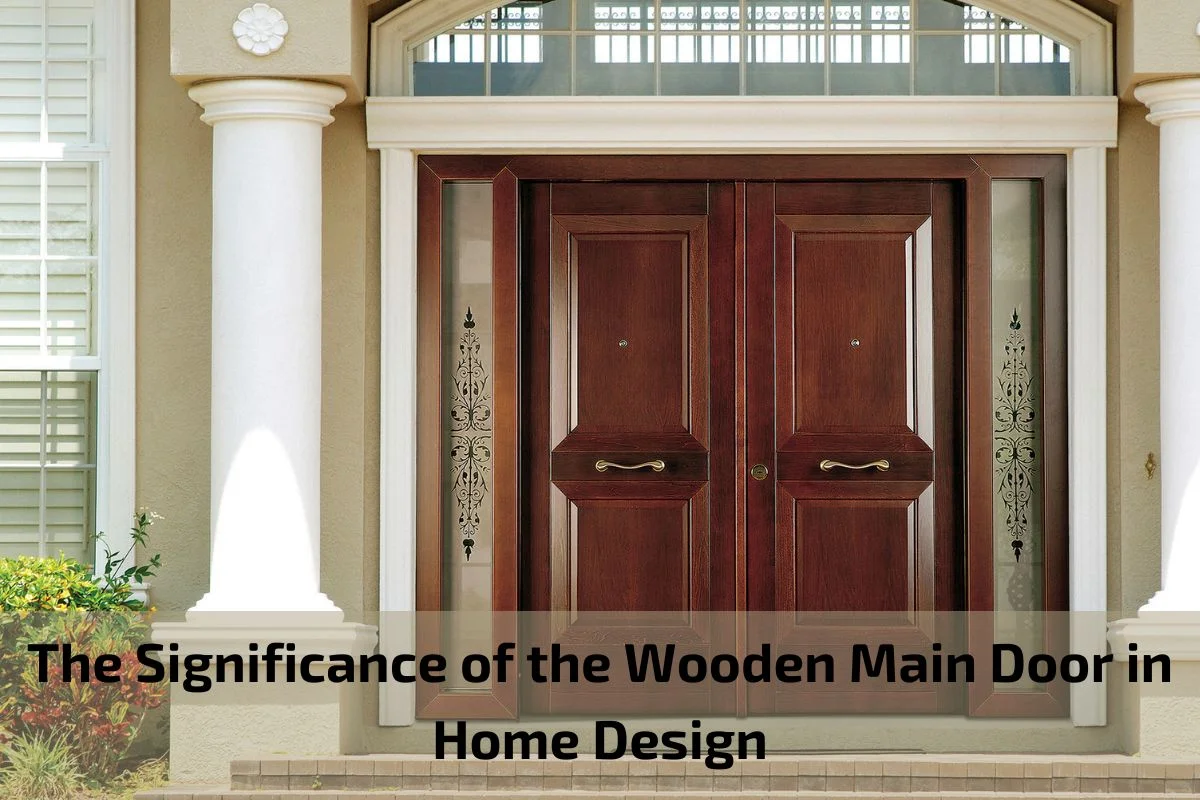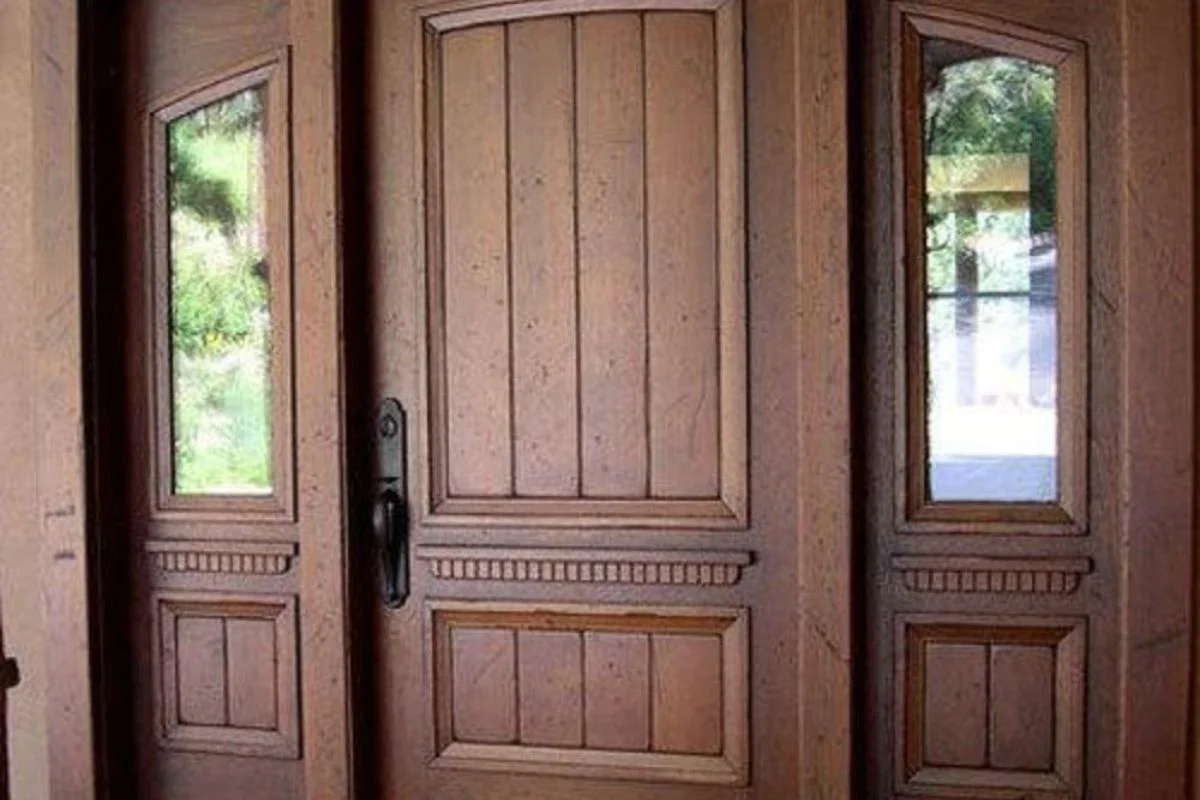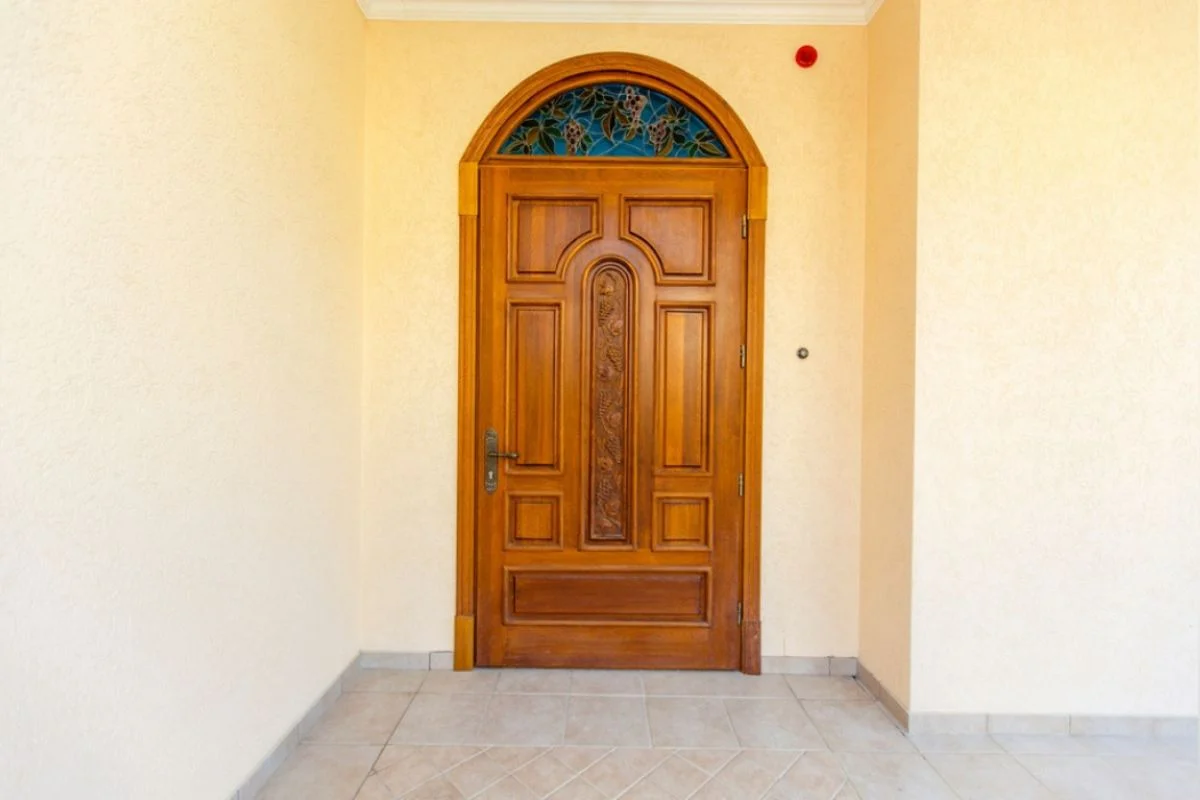
The main door of a home serves as more than just an entry point; it acts as a gateway that sets the tone for what lies beyond. Among the myriad options available, the wooden main door stands out for its timeless appeal, warmth, and versatility in home design.
The significance of the wooden main door goes beyond mere functionality. It embodies a sense of tradition, craftsmanship, and aesthetic elegance that leaves a lasting impression on visitors and residents alike. In this article, we delve into the profound significance of the wooden main door in home design, exploring its role as a focal point of architectural beauty, security, and personal expression.
From its natural allure to its ability to enhance the overall curb appeal of a home, the wooden main door holds a special place in the hearts of homeowners and designers alike. Let’s embark on a journey to uncover the unique charm and significance that the wooden main door brings to the art of home design.
Importance of the Main Door in Home Design
The main door of a home serves as more than just a point of entry; it’s a focal point that sets the tone for the entire property. Here’s why the main door holds such importance in home design:
First Impressions: The main door is the first feature visitors encounter when approaching a home. It creates a lasting impression, influencing how guests perceive the property and its inhabitants.
Architectural Statement: The design and style of the main door contribute significantly to the overall architectural aesthetic of the home. It’s an opportunity for homeowners to express their taste and personality.
Curb Appeal: A well-designed main door enhances the curb appeal of a home, making it more attractive to passersby and potential buyers. It adds to the overall visual appeal and value of the property.
Safety and Security: The main door is the primary point of entry and a crucial element for home security. A sturdy and secure door provides peace of mind for homeowners and their families.
Energy Efficiency: An energy-efficient main door can help regulate indoor temperatures and reduce heating and cooling costs. Proper insulation and weather sealing contribute to energy efficiency and comfort.
Functionality: Beyond aesthetics, the main door must also be functional and practical. It should provide smooth operation, easy access, and adequate ventilation when needed.
Symbolic Importance: In many cultures, the main door holds symbolic significance, representing hospitality, prosperity, and protection. It’s often adorned with decorative elements and symbols to convey blessings and good fortune.
Advantages and Disadvantages of Wooden Main Doors
Wooden main doors offer several advantages and disadvantages that homeowners should consider before making a decision. Let’s explore both sides of the coin:
Advantages:
Natural Beauty: Wooden main doors exude warmth and natural beauty, enhancing the aesthetic appeal of any home. The rich grain patterns and textures of wood create a welcoming atmosphere and add character to the entrance.
Customization Options: Wooden doors can be customized to suit the homeowner’s preferences and architectural style. From choosing the wood species to selecting the design, hardware, and finish, there are endless possibilities for personalization.
Durability and Longevity: High-quality wooden doors are durable and long-lasting, able to withstand daily wear and tear. With proper maintenance and care, wooden doors can last for decades, making them a worthwhile investment.
Insulation Properties: Wood is a natural insulator, providing excellent thermal and acoustic insulation properties. Wooden main doors help maintain indoor temperatures, reduce energy costs, and minimize noise transmission from outside.
Timeless Appeal: Wooden doors have a timeless appeal that transcends design trends. They complement a variety of architectural styles, from traditional to contemporary, and add a sense of charm and sophistication to the home.
Disadvantages:
Maintenance Requirements: Wooden doors require regular maintenance to preserve their appearance and performance. This includes periodic cleaning, sealing, and refinishing to protect against moisture, pests, and weather damage.
Vulnerability to Damage: Wood is susceptible to damage from moisture, rot, insects, and warping if not properly maintained. Exposure to harsh weather conditions can lead to deterioration of the wood over time.
Cost Considerations: Wooden doors tend to be more expensive than other materials like steel or fiberglass. The cost of wood, craftsmanship, and customization options may make wooden doors less budget-friendly for some homeowners.
Security Concerns: While wooden doors can provide adequate security, they may be more vulnerable to forced entry compared to steel or fiberglass doors. Reinforced hardware and locking mechanisms are essential for enhancing security.
Environmental Impact: The production of wooden doors may have environmental implications, especially if sourced from unsustainable forestry practices. Homeowners should consider choosing wood certified by sustainable forestry organizations.
Types and Designs of Wooden Main Doors
Wooden main doors n come in a variety of types and designs, each offering unique features and aesthetic appeal. Here are some common types and designs of wooden main doors:
Panel Doors:
- Panel doors are a classic and popular choice for wooden main doors. They feature multiple panels framed by rails and stiles, creating a traditional and timeless look.
- Panel doors can have various configurations, including raised panels, flat panels, and recessed panels, offering flexibility in design and style.
Carved Doors:
- Carved wooden doors feature intricate designs, patterns, and motifs carved into the wood surface.
- These doors add a touch of elegance and craftsmanship to the home’s entrance, making a bold statement and serving as a focal point of architectural interest.
Modern and Contemporary Designs:
- Modern wooden main doors feature clean lines, minimalist aesthetics, and sleek finishes.
- They often incorporate geometric shapes, asymmetrical patterns, and innovative materials, creating a contemporary and stylish entrance that complements modern architecture.
French Doors:
- French doors add elegance and sophistication to any home with their double-door design and large glass panels.
- These doors typically consist of two wooden panels hinged on opposite sides, allowing them to swing inward or outward. They are ideal for creating a seamless transition between indoor and outdoor spaces.
Craftsman Style Doors:
- Craftsman style doors emphasize simplicity, geometric patterns, and natural materials.
- These doors often feature vertical or horizontal panels, dentil molding, and distinctive hardware, reflecting the craftsmanship of the Arts and Crafts movement.
Rustic and Farmhouse Doors:
- Rustic and farmhouse style doors evoke a sense of warmth, nostalgia, and rural charm.
- They may feature distressed wood finishes, wrought iron hardware, and decorative accents such as crossbucks or X-shaped panels, adding rustic character to the home’s entrance.
Glass Inserts and Sidelights:
- Wooden main doors can incorporate glass inserts and sidelights to enhance natural light and visual appeal.
- Glass panels can be clear, frosted, or textured, offering privacy while still allowing light to filter into the entryway. Sidelights are vertical glass panels installed beside the door to expand views and brighten the foyer.
Dutch Doors:
- Dutch doors feature a unique split design, allowing the top and bottom halves to open and close independently.
- These doors are both practical and charming, offering ventilation and security while maintaining privacy. They are often used in kitchens, nurseries, and mudrooms.
Factors to Consider When Choosing a Wooden Main Door
Choosing the right wooden main door for your home involves considering several important factors. Here are key considerations to keep in mind:
Wood Species and Quality:
- Select a high-quality wood species such as mahogany, oak, cherry, or teak for durability and longevity.
- Consider the density, grain pattern, and natural resistance to rot and insects of the wood species.
Architectural Style and Home Design:
- Choose a wooden main door that complements the architectural style and design of your home.
- Consider factors such as the exterior color palette, texture, and overall aesthetic to ensure harmony with the surrounding environment.
Size and Dimensions:
- Measure the size and dimensions of the door opening accurately to ensure a proper fit.
- Consider the standard sizes available or opt for custom sizing to accommodate specific requirements.
Climate and Environmental Conditions:
- Take into account the climate and environmental conditions in your area, including exposure to sunlight, moisture, and extreme temperatures.
- Choose a wood species and finish that can withstand the prevailing weather conditions and minimize the risk of warping, cracking, or fading.
Budget and Cost Considerations:
- Determine your budget for the wooden main door, including installation costs and any additional features or customization options.
- Compare prices from different suppliers and consider the long-term value and benefits of investing in a high-quality door.
Maintenance Requirements:
- Consider the maintenance requirements of the wooden main door, including cleaning, sealing, and refinishing.
- Choose a finish that provides adequate protection against moisture, UV rays, and other environmental factors, reducing the need for frequent maintenance.
Security Features:
- Prioritize security features such as reinforced frames, solid-core construction, and high-quality locking mechanisms.
- Ensure that the door meets industry standards for security and provides peace of mind for you and your family.
Energy Efficiency:
- Look for energy-efficient features such as insulated cores, weatherstripping, and low-E glass inserts.
- Choose a door with good thermal insulation properties to minimize heat loss or gain and reduce energy costs.
Personal Preferences and Style:
- Consider your personal preferences and style preferences when choosing the design, finish, and hardware of the wooden main door.
- Explore different options and consult with a design professional to find a door that reflects your taste and complements your home’s aesthetic.
Conclusion
Choosing the perfect wooden main door for your home is a significant decision that encompasses various factors, from aesthetics and durability to functionality and budget. As the gateway to your home, the main door holds immense importance in both practical and symbolic terms.


